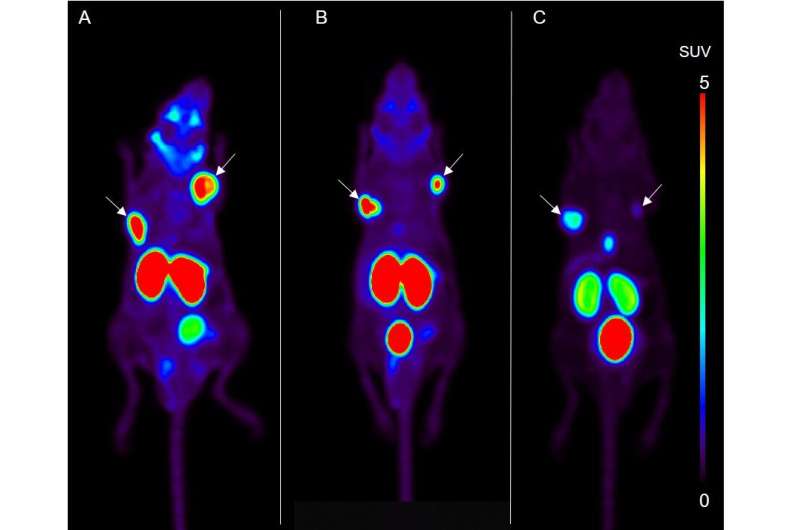New technique could optimize PSMA-targeted prostate cancer therapy

Researchers have discovered a new way to optimize results in treating patients with prostate cancer tumors while minimizing negative side effects. The study is featured in the November issue of the Journal of Nuclear Medicine.
According to the Centers for Disease Control, "Aside from non-melanoma skin cancer, prostate cancer is the most common cancer among men in the United States. It is also one of the leading causes of cancer death among men of all races."
Prostate-specific membrane antigen (PSMA) is an important target for nuclear medicine imaging of prostate cancer and subsequent PSMA-targeted radionuclide therapy. This combination of diagnostic imaging and therapy targeted on a feature of the identified tumors is called theranostics. The aim of this study was to evaluate the change in the whole-body distribution of the imaging agent fluorine-18 (18F)-PSMA-1007 when solutions with different peptide concentrations are used.
For the study, a mouse xenograft model was used, with the mice divided into three groups according to the peptide concentration injected (high, medium and low concentration/molar activity levels). A decrease in the peptide concentration (or molar activity) level resulted in decreased uptake in the tumor and, to a greater degree, in the salivary glands.
"This study demonstrated that the salivary glands, a risk organ in [actinium-225] 225Ac-PSMA therapy, showed more sensitive decrease in uptake against a reduced molar activity level of the radioligand solution than the tumors," explains Fumihiko Soeda in the Department of Nuclear Medicine and Tracer Kinetics at the Osaka University Graduate School of Medicine in Osaka, Japan. "This suggests that molar activity is an essential factor to define the optimal distribution for theranostic compounds. There is a possibility of obtaining a therapeutic effect in the tumor while minimizing the adverse effects in the salivary glands by setting an appropriate molar activity level in PSMA-targeted therapy."
More information: Fumihiko Soeda et al, Impact of 18F-PSMA-1007 Uptake in Prostate Cancer Using Different Peptide Concentrations: Preclinical PET/CT Study on Mice, Journal of Nuclear Medicine (2019). DOI: 10.2967/jnumed.118.223479


















